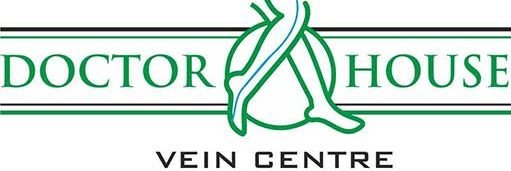Chronic Venous Insufficiency (CVI) is a medical term used to describe a condition in which the blood from the legs does not go back adequately to the heart through the heart veins. As we all know, the leg veins take the blood back from the legs to the heart, and this is done by the pumping function of the muscles of the calves, which act as the “heart pump of the legs”.
Now, Chronic Venous Insufficiency can occur due to two reasons:
- When there is a narrowing or blockage in a vein of the leg, in which case the blood finds it difficult to go upwards to the heart. The most common cause of this is Deep Vein Thrombosis
- When there is a leakage in some valves of the vein, which allows the blood to flow backwards in the vein towards the ankle, and extra venous blood accumulates in the legs. Leakages of the valves in the veins gives rise to Varicose Veins.
Chronic Venous Insufficiency occurs when your leg vein doesn’t allow blood to flow back up to your heart. What makes sure that blood flows towards your heart – the valves in your veins. It becomes a matter of concern when these valves don’t work well, and blood flows backwards.
Causes of Chronic venous insufficiency:
- Blood clots in the legs (DVT)
- Varicose veins
- Obesity
- Pregnancy
- Smoking
- Cancer
- Muscle weakness, leg injury, or trauma
- Swelling of a superficial vein (phlebitis)
- Family history of venous insufficiency
- Not moving for long periods of time
For more details or information on Varicose Vein, visit our website www.varicose.in or get in touch with Dr. Shoaib F. Padaria at Doctor House Cardiovascular Center in Mumbai.
Symptoms of Chronic venous insufficiency include:
- Swelling of the legs or ankles (edema)
- When you stand, when you raise your legs, pain gets worse
- Leg cramps
- Heaviness in your legs, aching or throbbing
- Itchy legs
- Weak legs
- The skin on your legs or ankles thickens
- Changing of skin color, especially around the ankles
- Leg ulcers
- Varicose veins
- A feeling of tightness in your calves
How is Venous insufficiency diagnosed?
Your doctor will perform a detailed physical examination and elicit a complete medical history to figure out if you have chronic venous insufficiency. You may also have to go through some imaging tests such as a Sonography test of the veins of the leg (Venous Doppler) to pinpoint the source of the problem.
How is Venous insufficiency treated?
Venous Insufficiency treatment completely depends on your health status and history. Other factors your doctors will consider are:
Specific symptoms Age The severity of your condition
How well you can tolerate medications or procedures.
Prescription compression stockings are the most common treatment for venous insufficiency. They apply pressure at the ankle and lower leg. They help improve blood flow and can reduce leg swelling. Compression stockings come in a range of prescription strengths and different lengths. What is the best type of compression stocking is for your treatment, your doctor will help you decide. There are many treatment methods for Varicose Veins or Deep Vein Thrombosis, which are the most common causes of Chronic Venous Insufficiency. Our doctors at our center will evaluate your condition, and decide what is most appropriate for you. For more details or information on Varicose Veins and Deep Vein Thrombosis, , visit our website www.varicose.in or get in touch with Dr. Shoaib F. Padaria at Doctor House Cardiovascular Center in Mumbai on 022-23525001 or 022-23526001

